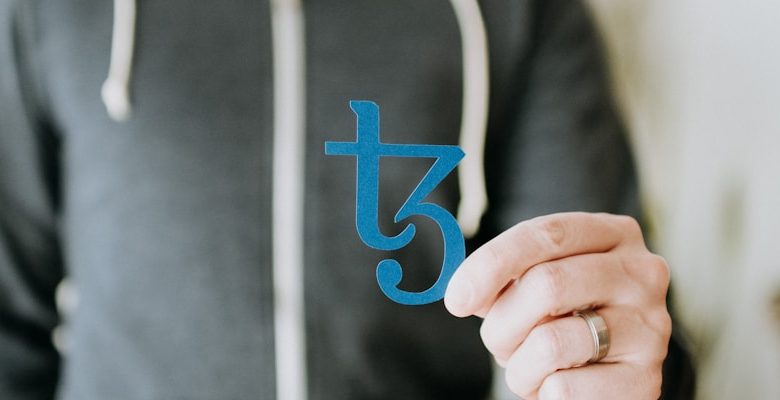The Impact of Blockchain on Intellectual Property Rights

- The Basics of Blockchain Technology
- The Role of Smart Contracts in Intellectual Property
- Challenges and Opportunities for IP Protection in a Blockchain Environment
- Case Studies: How Blockchain is Revolutionizing IP Rights Management
- The Future of Intellectual Property in the Era of Blockchain
- Regulatory Considerations for Blockchain-based IP Rights Management
The Basics of Blockchain Technology
Blockchain technology is a decentralized, distributed ledger system that records transactions across multiple computers in a secure and transparent manner. It serves as the foundation for cryptocurrencies like Bitcoin, but its applications extend far beyond digital currencies. In the context of intellectual property rights, blockchain technology has the potential to revolutionize how creators protect and manage their creations.
One of the key features of blockchain technology is its immutability. Once a transaction is recorded on the blockchain, it cannot be altered or deleted. This feature provides a high level of security and trust, making it ideal for storing sensitive information such as intellectual property rights. By utilizing blockchain technology, creators can establish a secure and tamper-proof record of their creations, proving ownership and authenticity.
Another important aspect of blockchain technology is its transparency. All transactions on the blockchain are visible to all participants, creating a public record of ownership and transfers. This transparency can help prevent disputes over ownership rights and ensure that creators receive proper recognition and compensation for their work. Additionally, smart contracts can be used to automate the licensing and distribution of intellectual property, streamlining the process and reducing the risk of disputes.
Overall, blockchain technology has the potential to greatly impact intellectual property rights by providing a secure, transparent, and efficient way to protect and manage creative works. By leveraging the unique features of blockchain technology, creators can establish ownership, protect their rights, and ensure fair compensation for their creations. As the technology continues to evolve, its impact on intellectual property rights is likely to grow, offering new opportunities for creators to protect and monetize their work in the digital age.
The Role of Smart Contracts in Intellectual Property
Smart contracts are digital protocols that facilitate, verify, or enforce the negotiation or performance of a contract. In the realm of intellectual property, smart contracts play a crucial role in automating and streamlining various processes. These contracts are self-executing, meaning that once the conditions encoded in the contract are met, the contract automatically executes the terms agreed upon by the parties involved. This automation reduces the need for intermediaries and minimizes the risk of human error or manipulation in intellectual property transactions.
One of the key benefits of using smart contracts in intellectual property is the transparency they offer. All transactions recorded on a blockchain are immutable and transparent, allowing for a secure and traceable record of ownership, licensing agreements, and royalties. This transparency helps to reduce disputes over intellectual property rights and ensures that creators are properly compensated for their work. Additionally, smart contracts can include licensing terms and conditions, allowing for automated royalty payments based on predefined criteria, such as usage or sales volume.
Moreover, smart contracts can help to enforce intellectual property rights by automatically triggering actions when unauthorized use or infringement is detected. For example, if a copyrighted work is used without permission, the smart contract can automatically issue a cease and desist notice or impose penalties on the infringing party. This automation not only saves time and resources but also provides a swift and efficient response to intellectual property violations.
In conclusion, the role of smart contracts in intellectual property is transformative, offering increased efficiency, transparency, and security in IP transactions. By leveraging blockchain technology and smart contracts, creators, innovators, and rights holders can better protect their intellectual property rights, streamline licensing agreements, and ensure fair compensation for their work. As the adoption of blockchain technology continues to grow, smart contracts are poised to revolutionize the field of intellectual property and reshape the way we create, protect, and monetize intangible assets.
Challenges and Opportunities for IP Protection in a Blockchain Environment
One of the main challenges facing intellectual property protection in a blockchain environment is the difficulty in enforcing traditional IP laws. The decentralized and immutable nature of blockchain technology makes it challenging for authorities to regulate and protect IP rights effectively. This lack of centralized control can lead to issues such as copyright infringement and trademark violations going unnoticed or unresolved.
However, despite these challenges, there are also many opportunities for enhancing IP protection in a blockchain environment. One such opportunity is the use of smart contracts to automate IP rights management. Smart contracts can be programmed to enforce IP agreements automatically, reducing the need for intermediaries and streamlining the process of IP protection.
Another opportunity lies in the transparency and traceability of blockchain technology. By storing IP information on a blockchain, companies can create an immutable record of ownership and usage rights, making it easier to prove ownership and prevent unauthorized use of intellectual property.
Case Studies: How Blockchain is Revolutionizing IP Rights Management
Blockchain technology has been making waves in the realm of intellectual property rights management, offering innovative solutions to longstanding challenges. Let’s delve into some case studies that showcase how blockchain is revolutionizing the way IP rights are protected and managed:
- Verifying Authenticity: One of the key benefits of blockchain in IP rights management is its ability to verify the authenticity of digital assets. By creating a tamper-proof record of ownership and provenance, blockchain ensures that creators can protect their work from unauthorized use or infringement.
- Smart Contracts: Blockchain-powered smart contracts are being used to automate licensing agreements and royalty payments. This eliminates the need for intermediaries and streamlines the process of managing IP rights, ultimately leading to faster transactions and reduced costs.
- Decentralized Marketplaces: Some platforms are leveraging blockchain to create decentralized marketplaces for buying and selling intellectual property rights. By connecting creators directly with buyers, these marketplaces offer greater transparency and efficiency in IP transactions.
- Global Protection: Blockchain enables IP rights holders to secure their assets on a global scale. With a decentralized network that spans across borders, creators can protect their work from infringement in various jurisdictions, ensuring comprehensive protection for their intellectual property.
- Proof of Creation: Through blockchain, creators can establish irrefutable proof of creation for their intellectual property. By timestamping digital assets on the blockchain, artists, writers, and inventors can demonstrate the originality and ownership of their work, bolstering their rights in case of disputes.
The Future of Intellectual Property in the Era of Blockchain
The future of protecting intellectual property rights in the era of blockchain technology is promising. Blockchain has the potential to revolutionize the way intellectual property is managed and enforced. By utilizing blockchain’s decentralized and transparent nature, creators can securely register and timestamp their work, creating an immutable record of ownership.
Smart contracts, which are self-executing contracts with the terms of the agreement directly written into code, can automatically enforce intellectual property rights. This eliminates the need for intermediaries and reduces the risk of infringement. Additionally, blockchain can enable creators to monetize their intellectual property through micro-payments, licensing, and royalties in a secure and efficient manner.
One of the key benefits of blockchain technology is that it provides a tamper-proof and decentralized ledger, which can help prevent intellectual property theft and infringement. This can be especially beneficial for industries such as music, art, and publishing, where piracy and unauthorized use of content are prevalent issues. By leveraging blockchain, creators can have greater control over their work and ensure fair compensation for their efforts.
Regulatory Considerations for Blockchain-based IP Rights Management
When it comes to implementing blockchain technology for managing intellectual property rights, there are several regulatory considerations that must be taken into account. One key aspect is compliance with existing laws and regulations governing IP rights. It is essential to ensure that any blockchain-based system meets the requirements set forth by relevant authorities to avoid legal issues.
Another important consideration is data privacy and security. Blockchain technology is known for its robust security features, such as encryption and decentralized storage. However, when it comes to managing sensitive IP rights information, extra precautions must be taken to protect the data from unauthorized access or tampering. Compliance with data protection laws, such as the GDPR, is crucial in this regard.
Moreover, the issue of jurisdiction and cross-border transactions must be addressed. Since blockchain operates on a global scale, it is essential to determine which jurisdiction’s laws will apply in case of disputes or infringement claims. Smart contracts can help automate this process by including jurisdiction clauses, but it is still necessary to comply with international laws and treaties.
Additionally, the issue of interoperability with existing systems and standards should be considered. Many organizations already have established processes for managing IP rights, and integrating blockchain technology into these systems can be challenging. It is crucial to ensure that the blockchain solution is compatible with existing standards to facilitate seamless data exchange and collaboration.
In conclusion, while blockchain technology offers numerous benefits for managing intellectual property rights, it is essential to address regulatory considerations to ensure compliance with laws and regulations, protect data privacy and security, determine jurisdictional issues, and ensure interoperability with existing systems. By carefully addressing these concerns, organizations can leverage blockchain technology to streamline IP rights management and enhance transparency and efficiency in the process.



